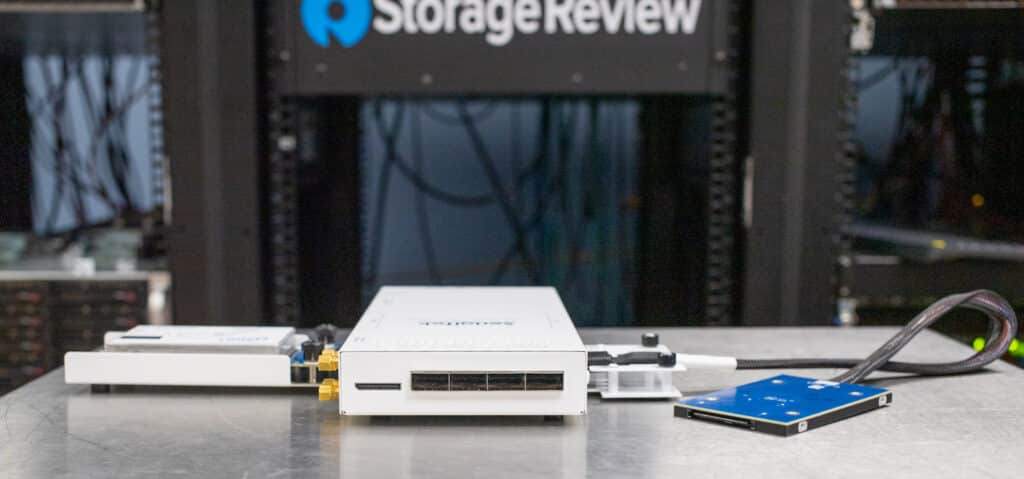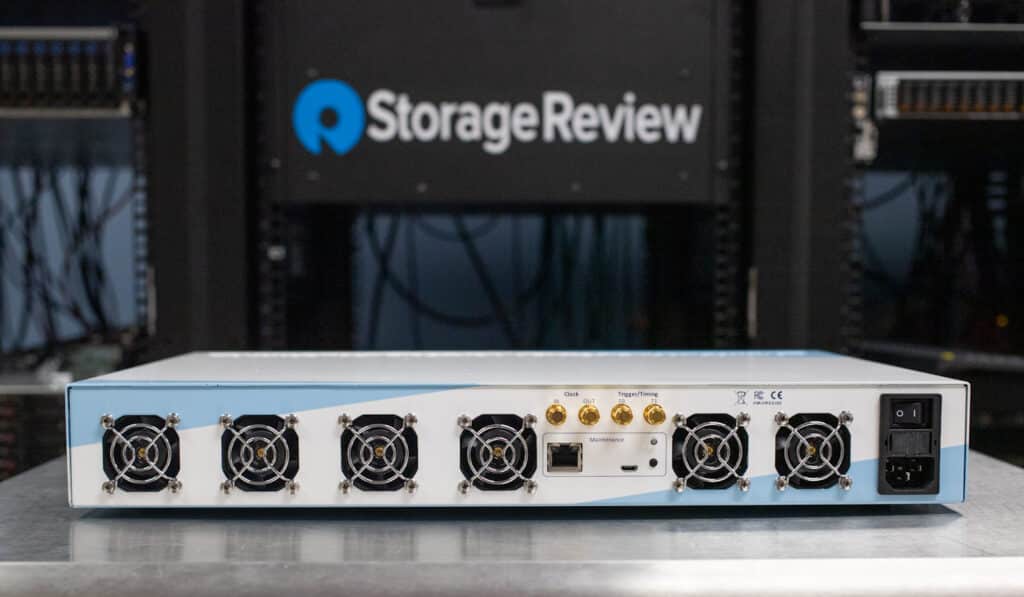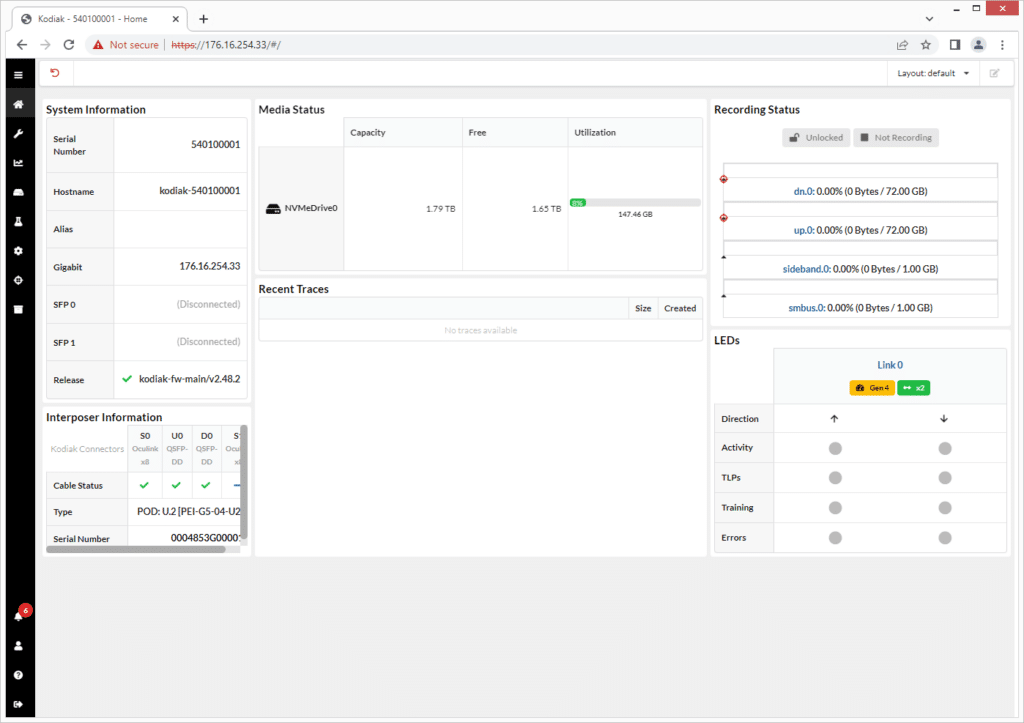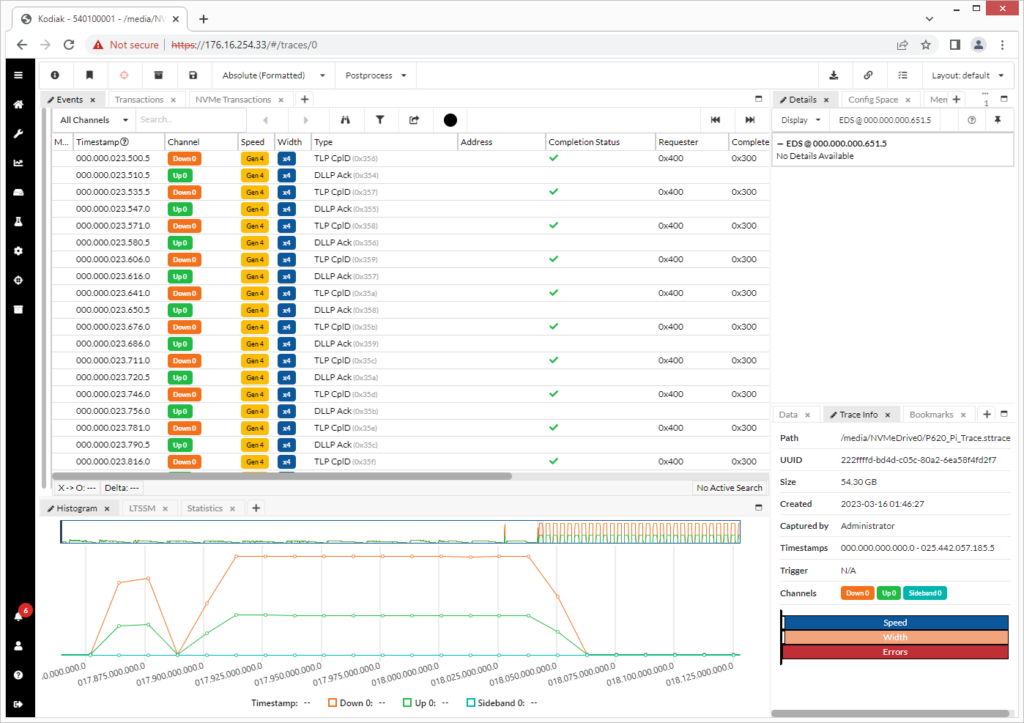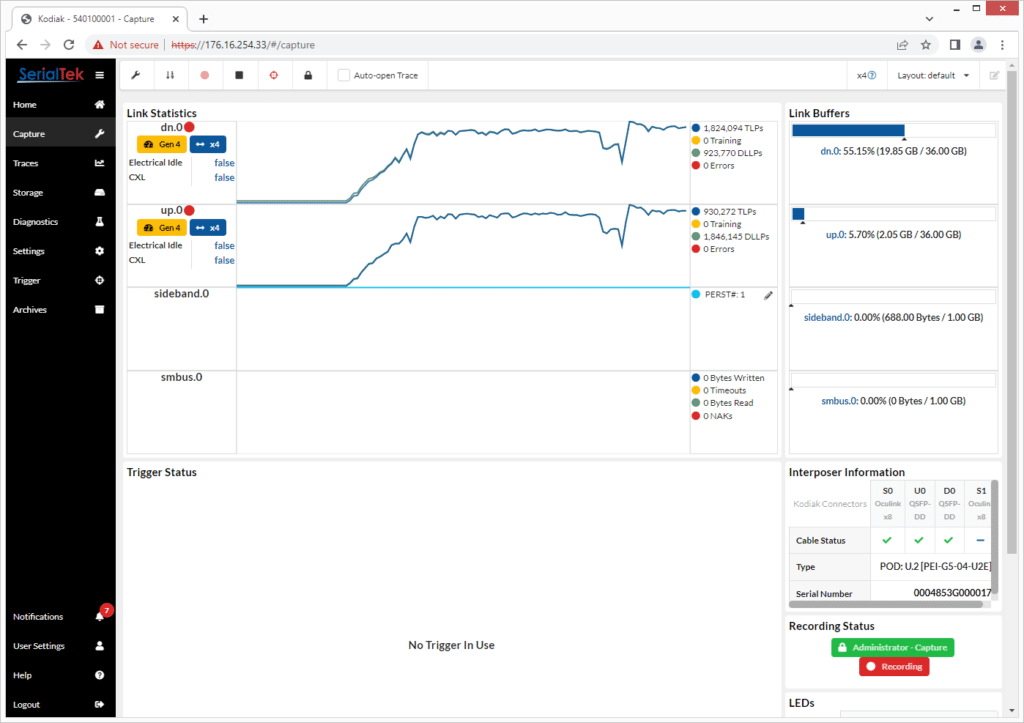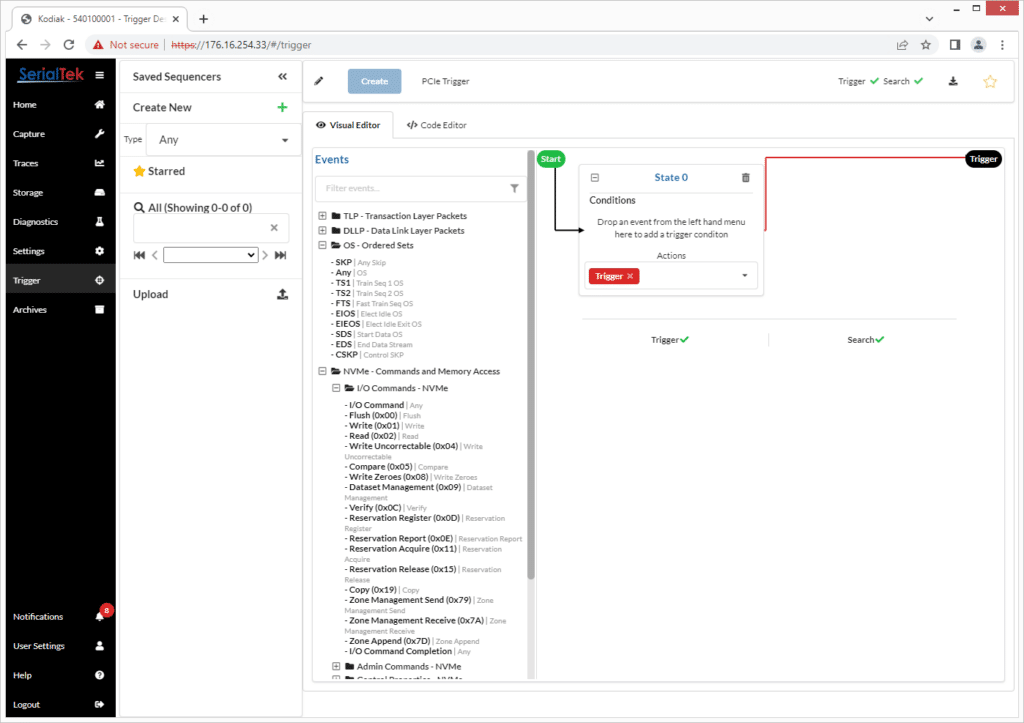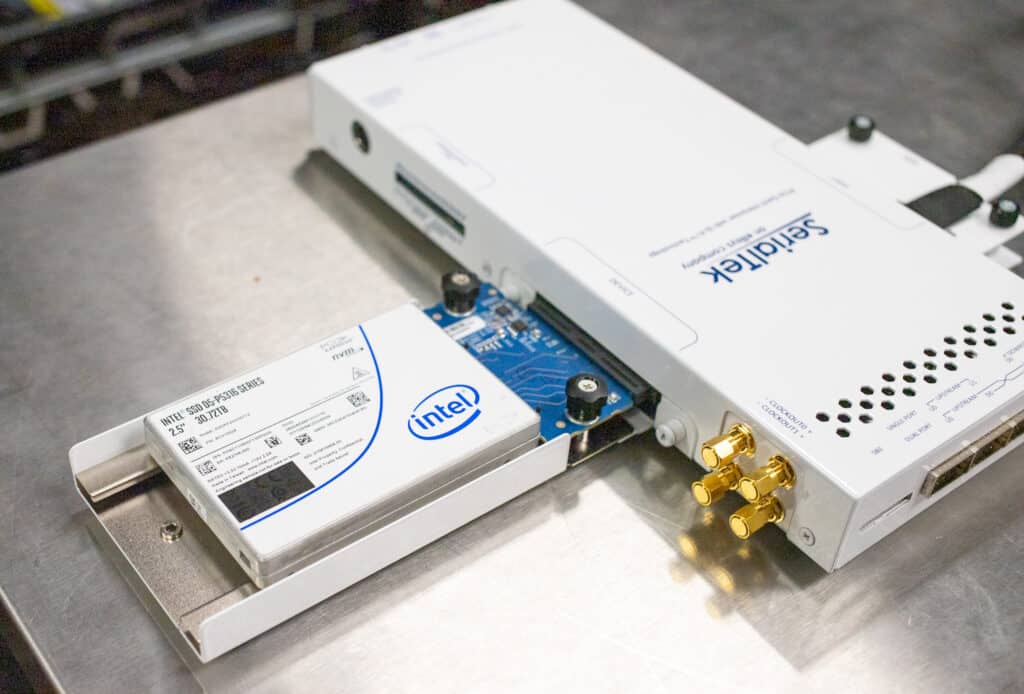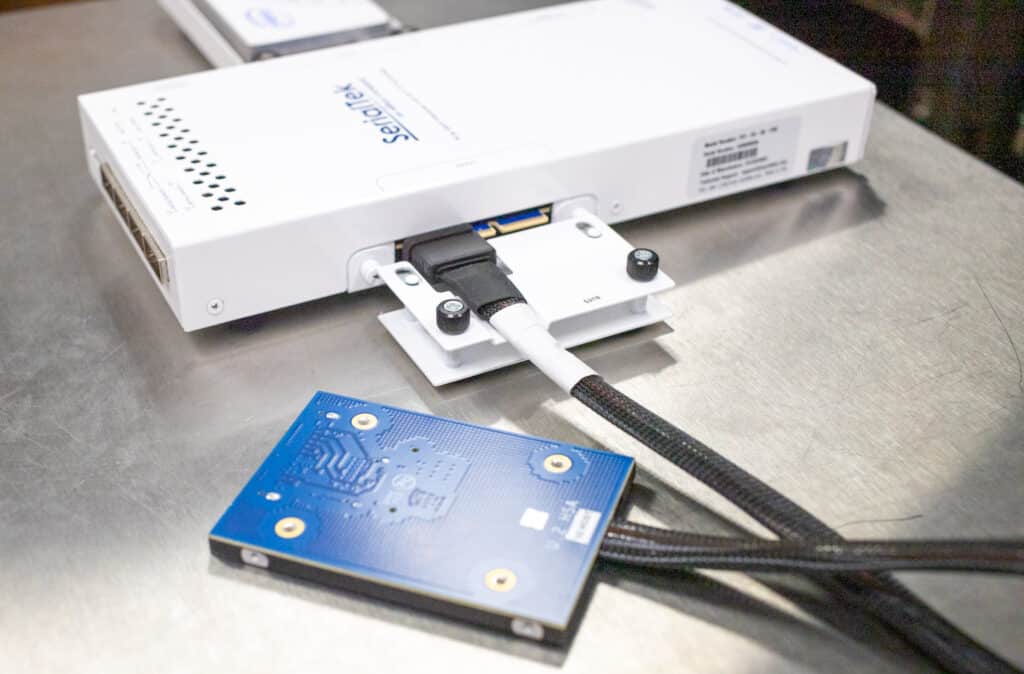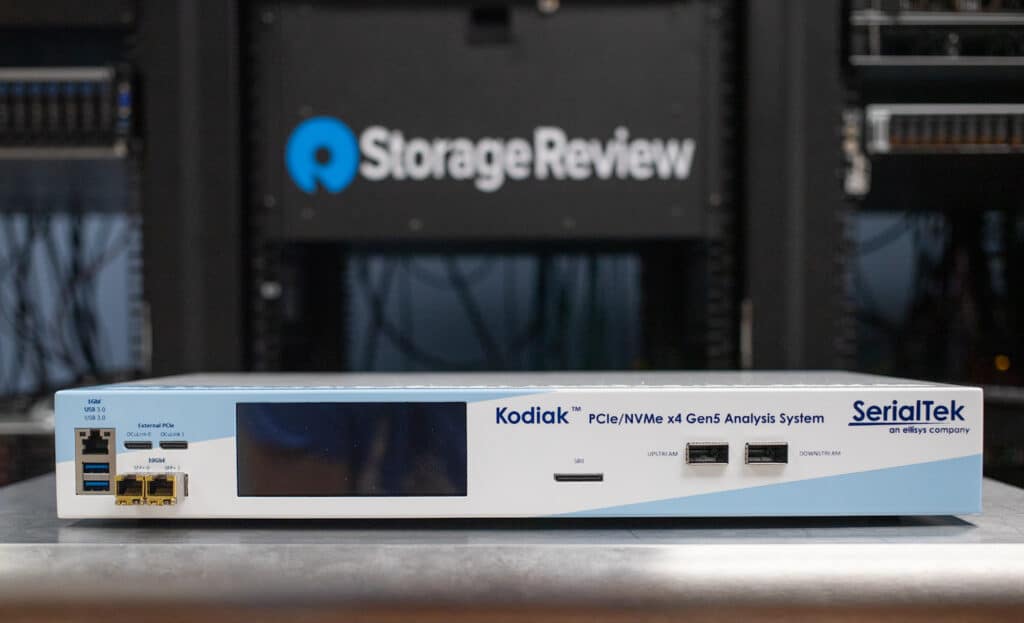The Kodiak PCIe Gen5 Analysis System is an advanced protocol analyzer designed to address the challenges posed by the complex and rapidly advancing storage and data center I/O technologies. This Kodiak system is highlighted by its highly responsive embedded data processing architecture, which allows for enhanced interface responsiveness, fast searching capabilities that involve large data volumes, and flexible, powerful hardware filtering. The platform also features a web browser-based BusXpert application to further facilitate the analysis process.
The Kodiak PCIe Gen5 Analysis System is an advanced protocol analyzer designed to address the challenges posed by the complex and rapidly advancing storage and data center I/O technologies. This Kodiak system is highlighted by its highly responsive embedded data processing architecture, which allows for enhanced interface responsiveness, fast searching capabilities that involve large data volumes, and flexible, powerful hardware filtering. The platform also features a web browser-based BusXpert application to further facilitate the analysis process.
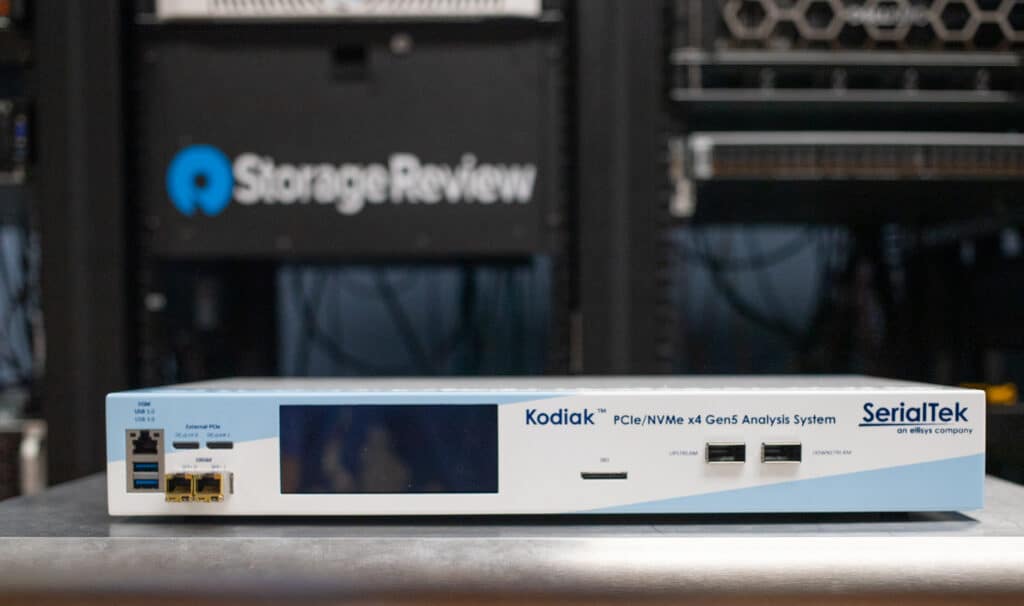
In general, PCIe/NVMe Analyzers are testing, measurement debugging tools designed to analyze and validate the performance, compliance, and interoperability of devices that utilize the PCIe technology and technologies. They are primarily designed for hardware/software developers and engineers who work with devices that use PCIe NVMe technology; in this case, up to the new Gen5 interface (though it supports previous generations as well).
It helps users by offering faster and more accurate testing and analysis, improved validation and verification processes, and the ability to identify and troubleshoot issues more efficiently. Additionally, it can reduce development time and costs by identifying and resolving problems early in the development cycle.
Kodiak PCIe Gen5 Analysis System Features
One of the key features of the Kodiak system is its proprietary Real-Time Protocol Processor (RTPP), which dynamically and automatically queries and saves PCI configuration space, host controller registers, and NVMe queues, whether the analyzer is actively recording or idle. This innovation eliminates the need for time-consuming reboots and enables precise decoding, triggering, and filtering using current values.
The system also has a broad range of form factor support, such as AIC (x4), EDSFF, M.2, U.2, and U.3, with single-port (1×4) and dual-port (2×2) analysis combined into one interposer unit. This means a potential for savings in cost in enterprise environments where all form factors are used, as it removed the need to buy additional devices. Moreover, SI-Fi interposers support all relevant side bands, including SMBus (e.g., NVMe-MI) from the host or from external/third-party injection or generation tools.
Kodiak’s flexible trace storage and retrieval options include two 10GbE SFP+ ports, a GbE port, internal SSD storage of up to 2TB, two USB 3.1 ports, and two PCIe OCuLink ports. These features allow users to offload traces to a host computer or network, providing read-only access for other users and enabling various direct-attach storage options.
SerialTek’s proprietary SI-Fi interposer technology is a key element in the system’s design, ensuring transparency in the probing process. The technology’s specialized linear amplifier design receives PCIe analog signals at a differential input and distributes them to two separate phase-matched differential outputs with a nominal, idealized gain of 0dB. This approach simplifies the analyzer and product under test setup and avoids limitations inherent in other probing approaches where link training sequences don’t pass through the interposer.
The SI-Fi technology and Kodiak’s adaptive EQ capabilities eliminate the need for calibration, which is required by competing PCIe Gen5 analyzers and interposers, which often leads to reliability issues. With these features, users can save hours in setup time and follow link characteristic changes dynamically, such as Hot Plug or NVM Subsystem Reset (NSSR), ultimately streamlining the testing process.
Kodiak PCIe Gen5 Analysis System Design and Build
The Kodiak Gen5 Analysis System features an all-metal enclosure with a nice light blue and grey design. On the front panel are dual 1GbE USB 3.0 ports, two PCIe OCuLink ports (high-speed interface connectors used to connect external PCIe devices), and dual 10GbE SFP+ ports, which can be used to connect the system to a network for data transfer and remote control purposes.
Front and center is the touchscreen LCD, which allows users to analyzer configure, control and receive status updates from the analyzer.
To the right are the System Bus ports (SB0, SB1), which are the primary interface port on the analyzer used for capturing data from the system under test; the Upstream PCIe port, which is used to connect to the upstream port of the device being analyzed; and the downstream port, which is used to connect to the downstream port of the device being analyzed.
The six system fans are spread across the back panel. In between the fans are the Clock In/Out and Trigger/Timing In/Out connectors, which synchronize and trigger the analysis of PCI traffic. The Clock In/Out connectors supply a precise clock signal that ensures the accurate synchronization of the capture and analysis of PCI traffic while the Trigger/Timing In/Out connectors provide a signal that initiates or terminates the capture and analysis of PCI traffic.
Underneath these are the maintenance ports, and to the far right is the power connector and switch.
Kodiak PCIe Gen5 Analysis System Management
“BusXpert” is integrated with the Kodiak PCIe x16 Gen5 Analyzer hardware to provide a user interface for accessing and interpreting captured data. The BusXpert software is based on an embedded software framework and REST API, which allows it to seamlessly integrate with the Kodiak hardware.
The Home dashboard features sections like system information (serial number, hostname, alias, Gigabit, version) media status (SSD type, capacity information and utilization), information about the system LEDs and recording status. In our case, we ran a trace on a Solidigm QLC SSD.
The Event tab is a section that displays a table with rows that contain various information related to PCIe events, including, such as the time of occurrence (Timestamp), the channel on which the event took place (Channel), the speed and width of the PCIe link (Speed and Width), the type of event (Type), the address associated with the event (Address), completion status (Completion), requestor information (Requestor), and completion details (Complete).
Below the Event tab, users have other information like the Histogram tab, which provides a graphical representation of the distribution of events over time. This helps users to visualize the frequency or occurrence of different types of events in the PCIe Gen5 analysis.
The “Link statistics” section in BusXpert provides users with information about the performance and status of PCIe links or channels. The “dn.0” and “up.0” refer to the downstream (dn) and upstream (up) links of the PCIe bus, respectively, with “0” indicating the first link or channel.
It also includes details such as link speed (e.g., Gen3, Gen4, or Gen5) and link width (e.g., x2, x4, x8, x16).
To the right of the line graph is the color code:
- TLPs (Transaction Layer Packets) are represented by the color blue, which indicate the number of TLPs captured or observed on the PCIe link or channel.
- Training, which refers to PCIe link training or link training and status state machine (LTSSM) events, is represented by the color yellow, which indicate the number of training events detected or captured.
- DLLPs (Data Link Layer Packets) are represented by the color green, which indicate the number of DLLPs captured or observed on the PCIe link or channel.
- Errors, which may include various types of PCIe link errors or other anomalies, are represented by the color red, which indicate the number of detected errors.
The numbers next to each color code likely indicate the count or frequency of each type of event during the monitoring or analysis period. This provides users with substantial insight into these occurrences.
In the Trigger section, you can load, create, or upload “saved sequences”. These are predefined or customized sets of test cases or scenarios that can be saved and reused for later analysis or testing purposes.
To the right are the “visual editor” and “code editor”. These allow users to visually or programmatically define or modify specific parameters, settings, or configurations related to PCIe transactions, events, or scenarios.
Kodiak PCIe Gen5 Analysis System Compatibility
The Kodiak PCIe Gen5 Analysis System’s main strength lies in its ability to connect to virtually any form factor NVMe drive. This versatility is critical in today’s fast-moving storage landscape, where so many different form factors and interfaces are being used.
The system is compatible with a variety of PCIe Gen5 interfaces, including x16 and x8 slot interposers, as well as interposers for specific form factors like EDSFF and M.2. In addition, the system supports packages that include smart interface adapters for x4 AIC, EDSFF, M.2, U2, and U3, making it easy to test and analyze a wide range of devices.
Other supported interposers include Slim-SAS, OCuLink, and MCIO cable interposers, as well as interposers for Gen4 HD MiniSAS cables.
| Supported PCIe Gen5 SI-FI Interposers |
| PCIe Gen5 x16 slot interposer |
| PCIe Gen5 x8 slot interposer |
| PCIe Gen5 x16 OCP interposer (not including Quarch PAM) |
| PCIe Gen5 x8 EDSFF E3 interposer (not including Quarch PAM) |
| PCIe Gen5 x4 Premium Package. Includes SI-Fi Interposer POD and smart interface adapters for x4 AIC, EDSFF (E1.S, E1.L, E3.S, E3.L), M.2, U2, U3; 6MO |
| PCIe Gen5 x4 slot interposer |
| PCIe Gen5 EDSFF (E1.S, E1.L, E3.S, E3.L) |
| PCIe Gen5 M.2 interposer |
| PCIe Gen5 U2 interposer |
| PCIe Gen5 U3 interposer |
| PCIe Gen4 Slim-SAS Cable Interposer |
| PCIe Gen4 OCuLink Cable Interposer |
| PCIe Gen5 MCIO Cable interposer |
| PCIe Gen4 HD MiniSAS Cable Interposer |
Conclusion
The Kodiak PCIe Gen5 Analysis System is a key tool for anyone involved in testing and analyzing PCIe Gen5 and NVMe devices. It’s advanced features and versatile interface options make it a must-have for hardware and software developers and engineers, as it allows them to identify and troubleshoot issues quickly and efficiently. The system’s powerful Real-Time Protocol Processor (RTPP), flexible trace storage and retrieval options, and SI-Fi interposer technology ensure accurate and reliable testing results without the need for time-consuming calibrations.
Moreover, its broad range of form factor support (such as AIC, EDSFF, M.2, U.2, and U.3) makes it an excellent choice for enterprise environments where multiple form factors are used.
That said, it can be a bit overkill for some use cases, as its advanced features and capabilities may not be necessary for smaller-scale testing and analysis, and its high price point may not be justified for those with more limited needs. However, for labs that require the highest level of accuracy and reliability in their testing and analysis processes, the Kodiak PCIe Gen5 Analysis System is an excellent choice.
Engage with StorageReview
Newsletter | YouTube | Podcast iTunes/Spotify | Instagram | Twitter | TikTok | RSS Feed

